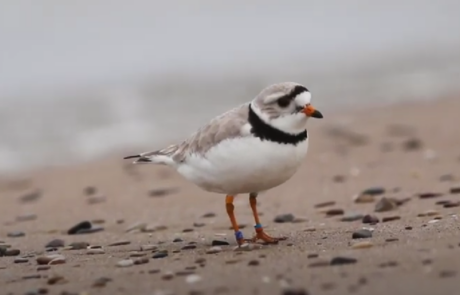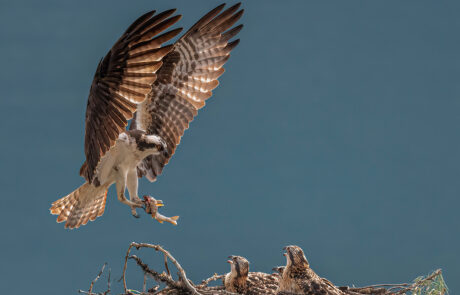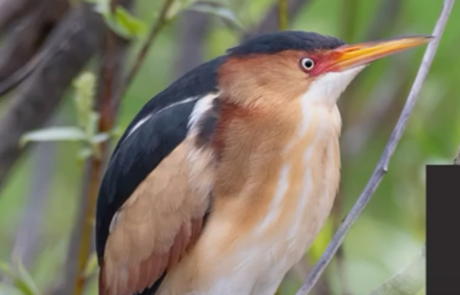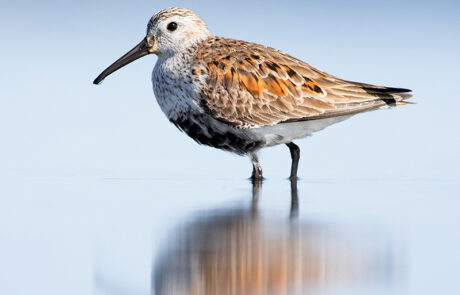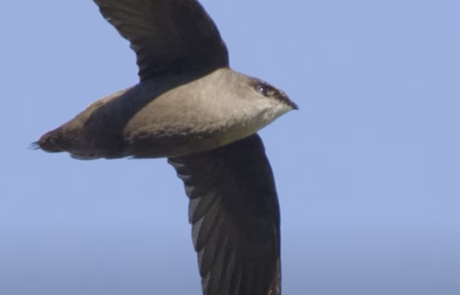The Lifestyles of Birds: Behaviours and Habitats
Now that you understand size and shape a bit better, the next thing to consider when identifying birds is context clues, like location and the bird’s behaviour.
Location and Time of Year
When we’re thinking about location, we’re considering where in the world we are, the time of year, and the type of habitat we see a bird in.
Some species are present year-round throughout most of Canada, like Black-capped Chickadee or Common Raven. While other species may only be found in certain parts of the country or during specific times of the year. Shape and size clues might help you narrow down which bird you’re looking at, and then considering location will take it one step further.
While the Black-capped Chickadee can be found throughout Canada, its close relative, the Mountain Chickadee, will only be found in the Rocky Mountains of Alberta and British Columbia. They have the same size and shape, but you won’t see a Mountain Chickadee on the East Coast or in downtown Toronto. Another example of this is Blue Jay vs Steller’s Jay. They have a very similar size and shape, but you’re unlikely to see a Steller’s Jay outside of British Columbia and Alberta, while a Blue Jay can be seen in most other provinces.
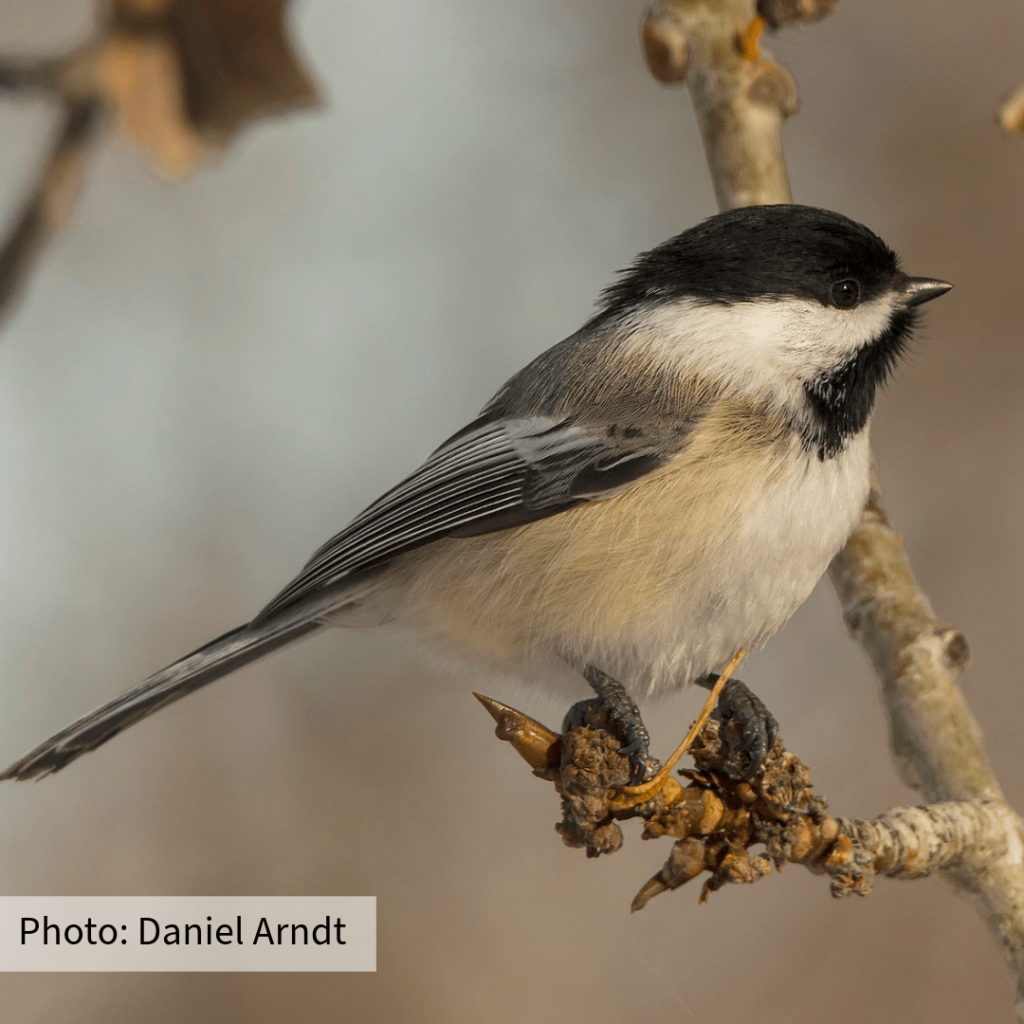
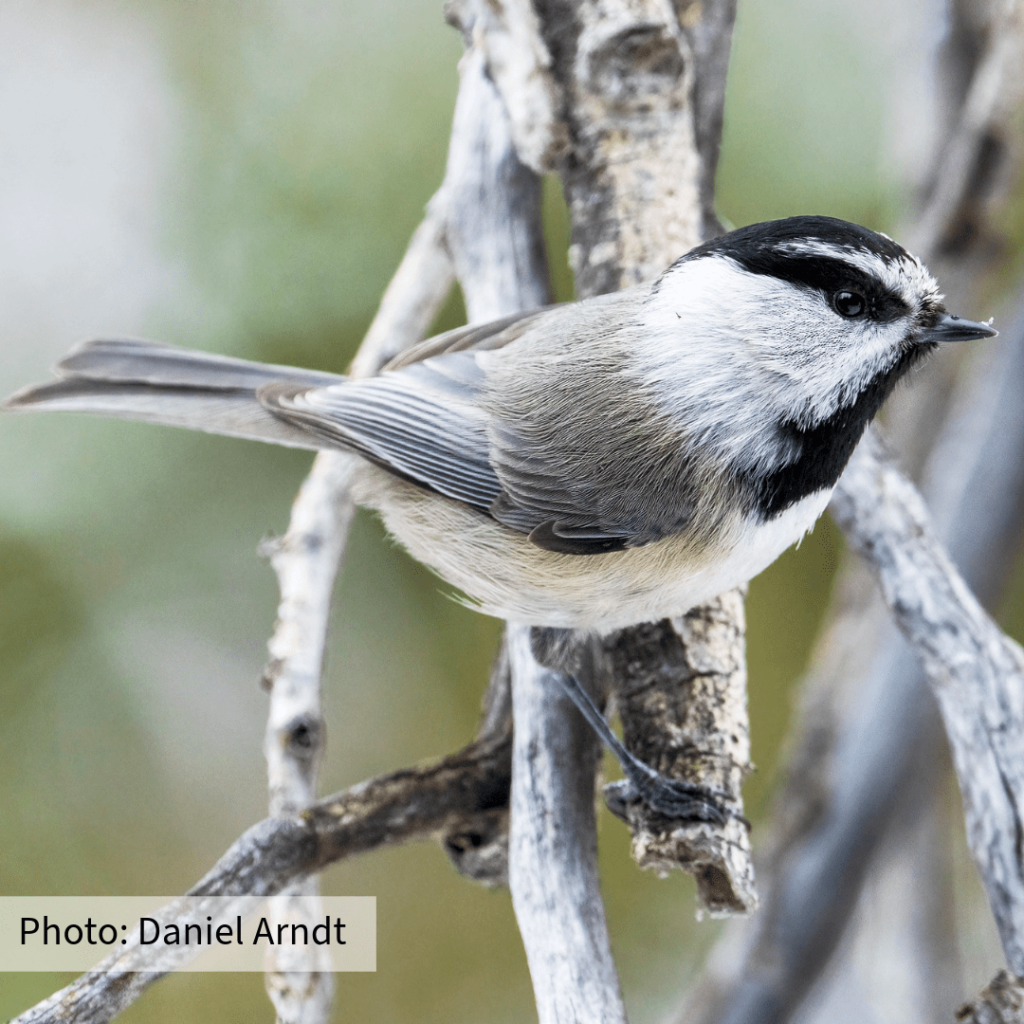
Some species might only be present at certain times of the year. For example, the Yellow Warbler can be found across all provinces and territories – though in much lower numbers in Nunavut, and the far northern regions. They’ll only be here in the summer months when they’re breeding, then they’ll migrate to Central and South America. So if we’re birding in the winter time, we know we won’t see a Yellow Warbler, or any warbler species unless you’re very lucky! They’ll all have migrated south.
Canada has just over 700 bird species! Many of them will only be spotted in specific locations. Most guidebooks and apps will have range maps. Range maps are a quick and easy tool that helps us see where a bird might be found throughout its life.
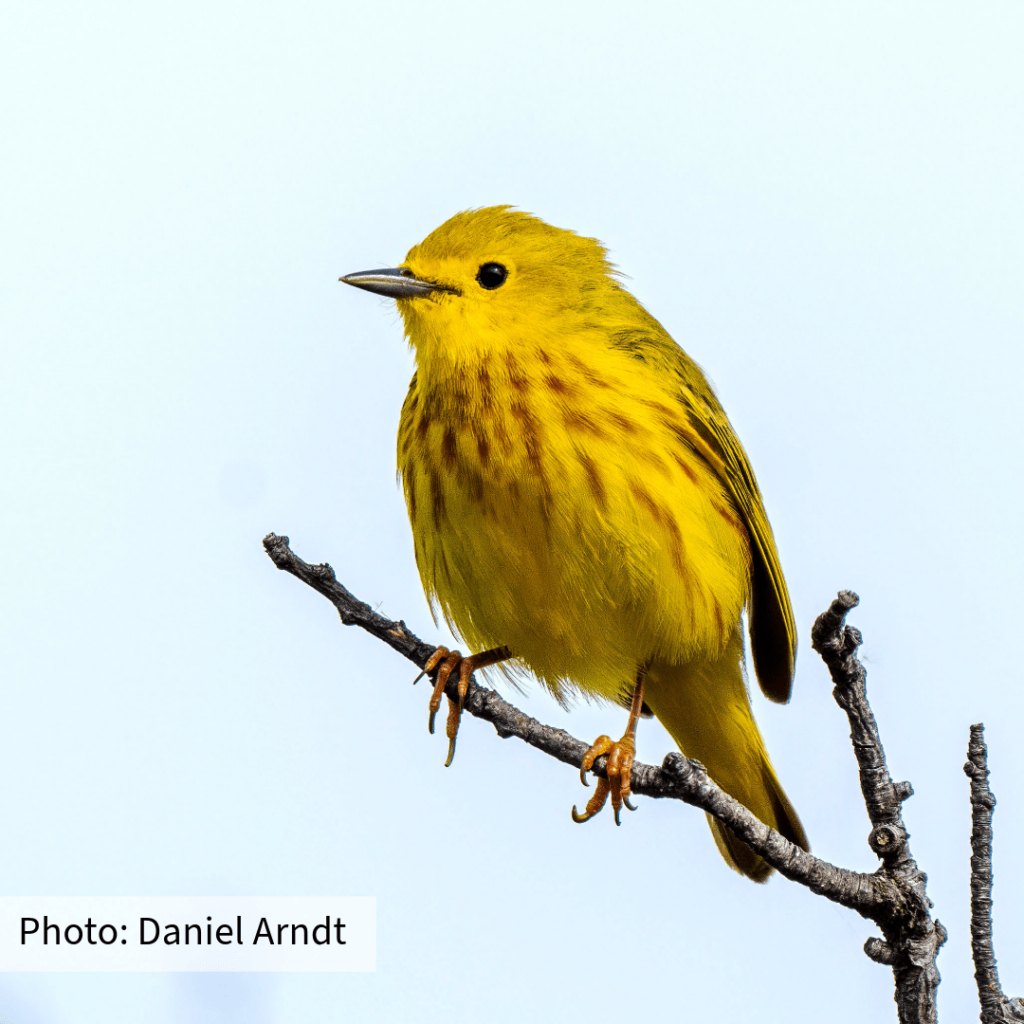
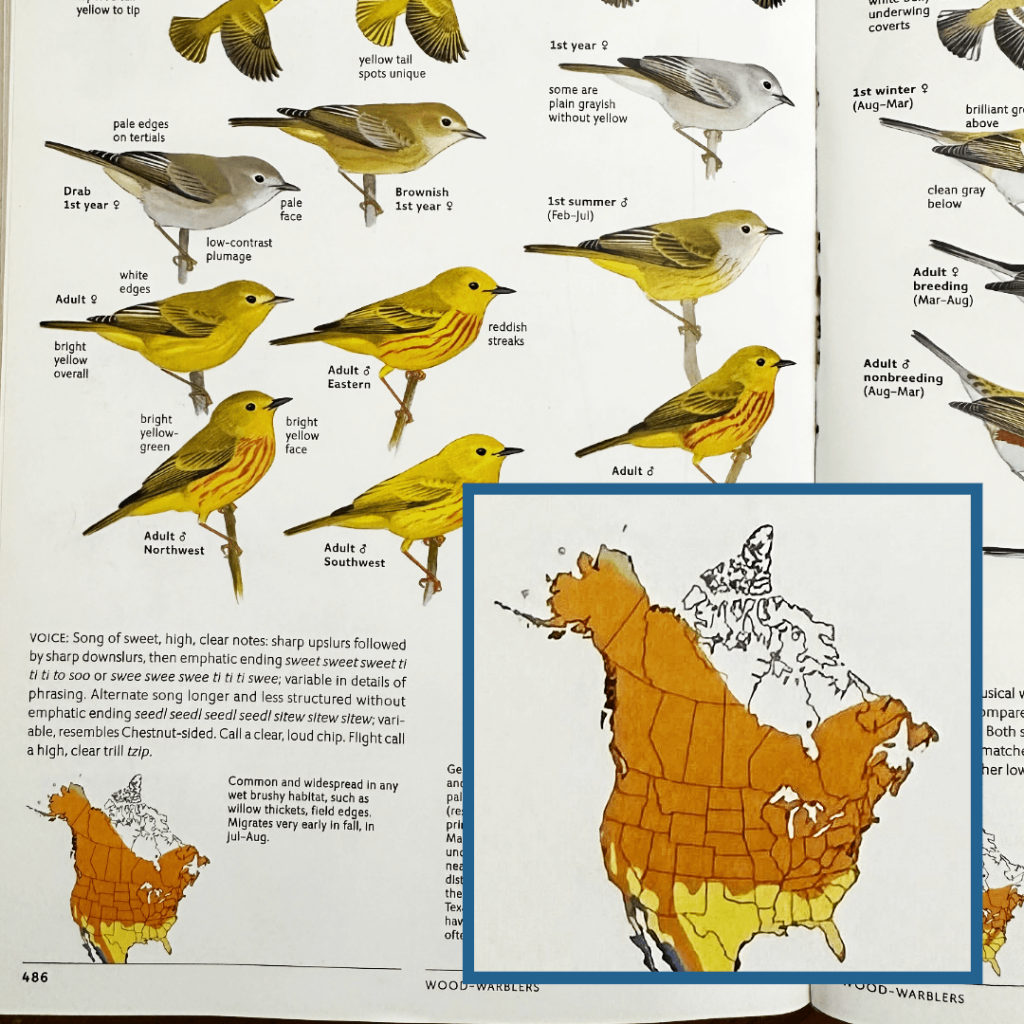
Habitat
Habitat is another location type to consider when you’re out birding. Some species are specialists, meaning they prefer very specific types of habitats. While other species are generalists, and will do well in many different places.
Killdeer and Piping Plover are both plover species – they look similar and both lay their eggs on the ground. However, Piping Plovers are much more specialized, they prefer to nest in sandy or cobble beach habitats near large bodies of water such as along the Atlantic Coast. Killdeer however, will nest on beaches, grassy lawns, or even parking lots. You’ll see Killdeer in most provinces, but Piping Plovers are much rarer.
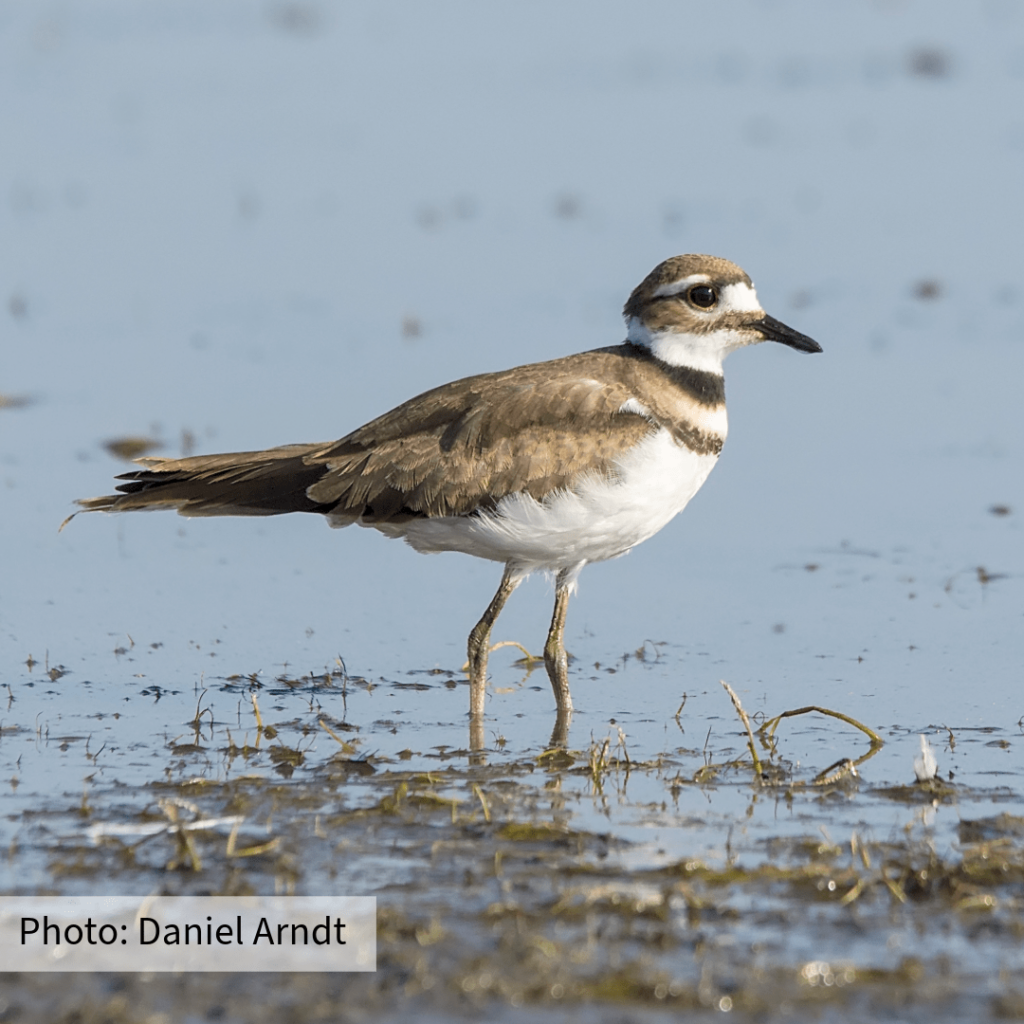
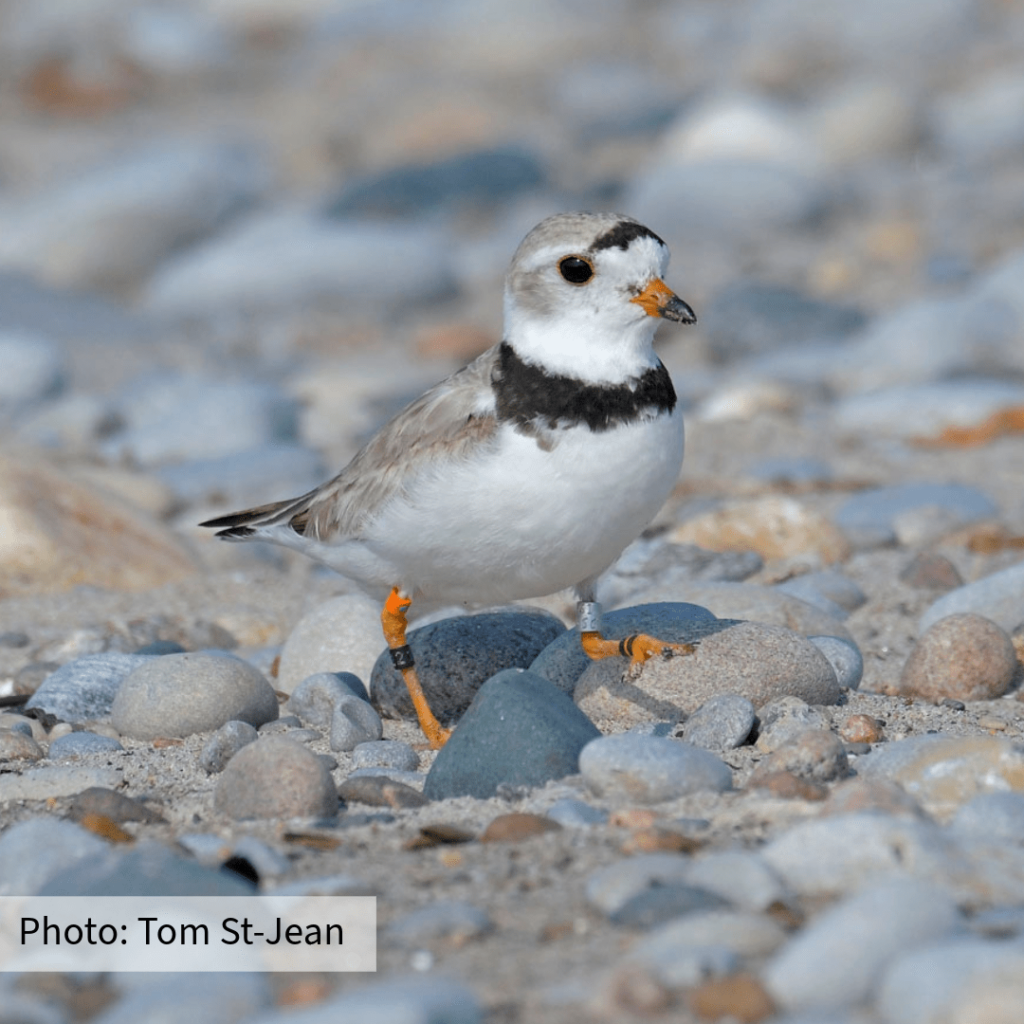
Habitat preferences will often be linked to what the bird eats, or breeding behaviours. Once you know what habitat a species will be found in, you can use that knowledge to find specific birds. For example, Ospreys are large raptors that eat fish. You’ll see them near rivers, lakes, and along coastlines. They’ll often be soaring above the water, or will be perched high on a tree or utility tower near water. Water is an essential component of an Osprey’s habitat. In comparison, the Red-tailed Hawk feeds on small mammals like mice. They’ll be seen hunting in a wider variety of habitats because their prey can be found in fields, along the edges of forests, the sides of roads, or even in urban environments.
Behaviour
How a bird behaves is another great way to identify them. Bird behaviours may change throughout the year, and they’ll vary quite a bit between species, their preferred habitats, and preferred foods.
Woodpeckers will often be drumming on trees. Their feet are adapted so that they can perch easily on the sides of trees, check out the big toes in the photos below! White or Red-breasted Nuthatches and Brown Creepers are other birds with that adaptation. Often these birds will be moving quickly along the surface of a tree trunk searching for food. Nuthatches usually move down trees, with their heads pointed towards the ground, while Brown Creepers usually move up the tree.
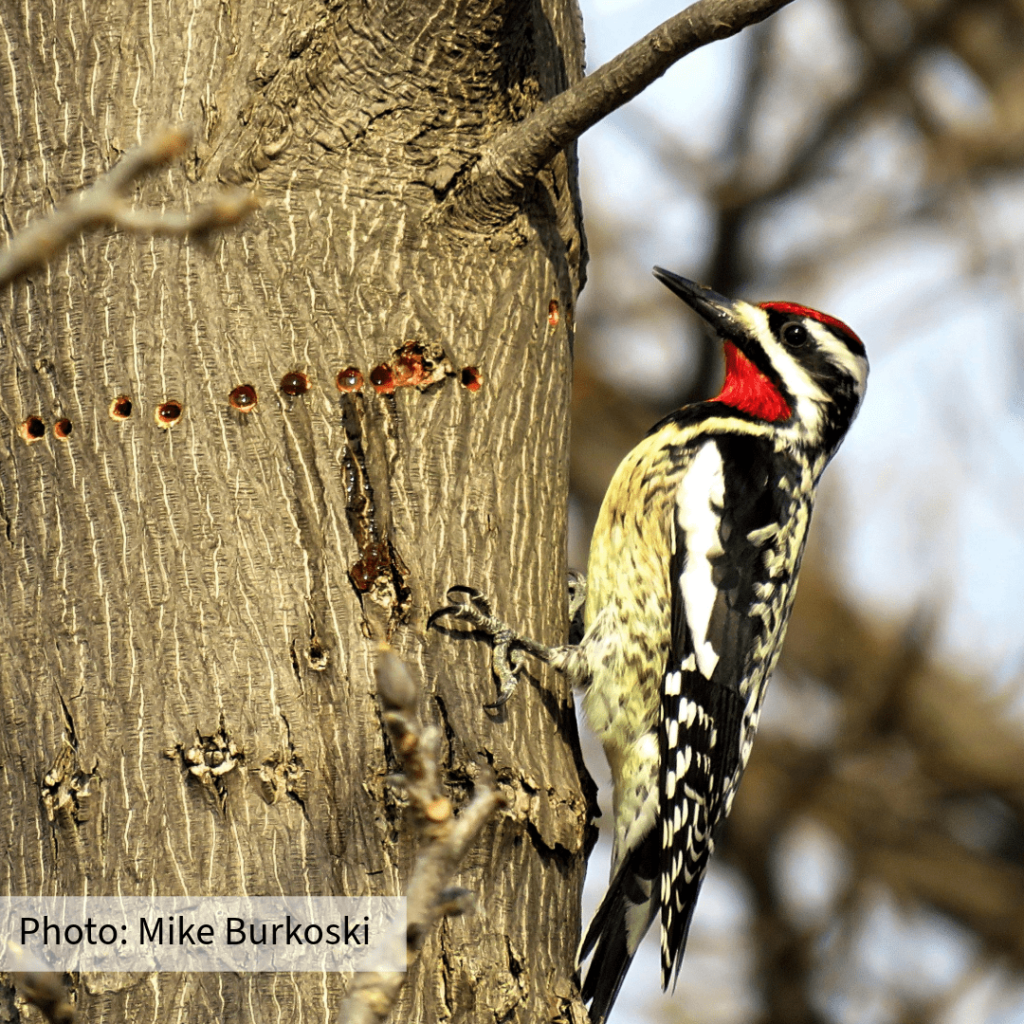
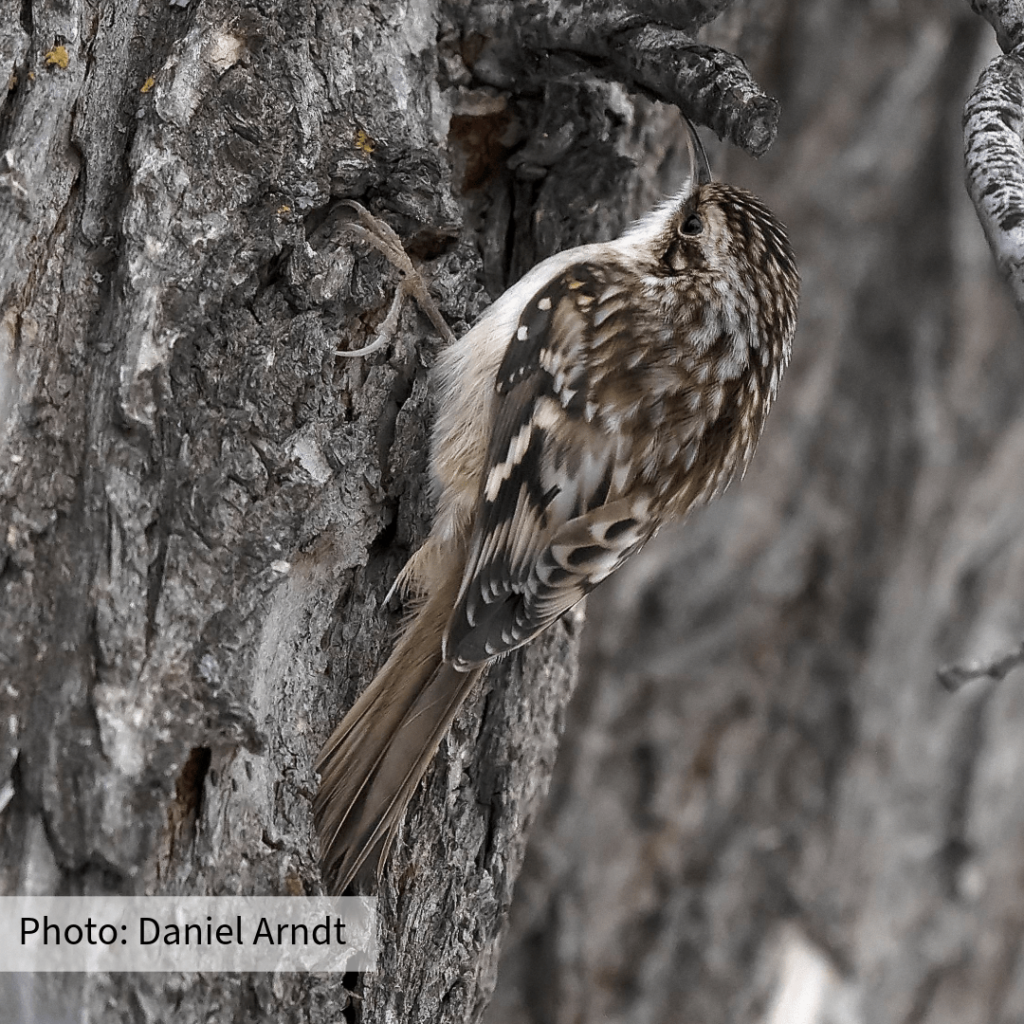
When it comes to ducks, there are diving ducks and dabbling ducks. Diving ducks will plunge beneath the surface of the water to find food like snails, fish, and invertebrates. Their feet will often be positioned towards the backs of their bodies to help them dive beneath the surface, but this also makes it hard for them to walk on land. They need a longer stretch of water for a more gradual take-off, kind of like an airplane on a runway or a floatplane on a lake. Look for Bufflehead, Lesser Scaup, Ring-necked Duck, and merganser, grebe, loon or scoter species.
Dabbling ducks will often be skimming the surface of the water for foods like insects and plants. They won’t dive beneath the water, but they will tip their heads into the water and leave their butts in the air while they forage. Their legs are positioned directly beneath their bodies, which allows them to easily walk on land. Dabbling ducks can fly more directly into the air, unlike diving ducks. Look for Mallards, Northern Pintail, Northern Shoveler, Gadwall, and teal species.
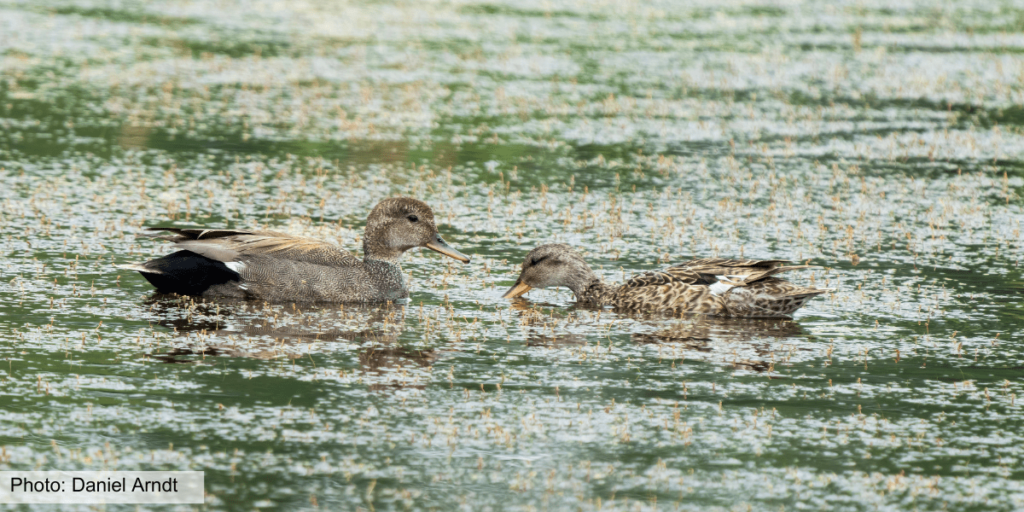
Aerial insectivores are birds that eat insects while flying, like swifts, swallows, flycatchers and nightjars. They’re often smaller species, and will move very quickly through the air as they snatch bugs. You may see them more at dusk or dawn when bugs are most abundant.
Some species have distinct nesting habitats like Bank Swallows or Cliff Swallows. Bank Swallows will nest in small burrows in the banks and bluffs along bodies of water. Cliff Swallows will make round mud nests, often stuck to the underside of overpasses or bridges.
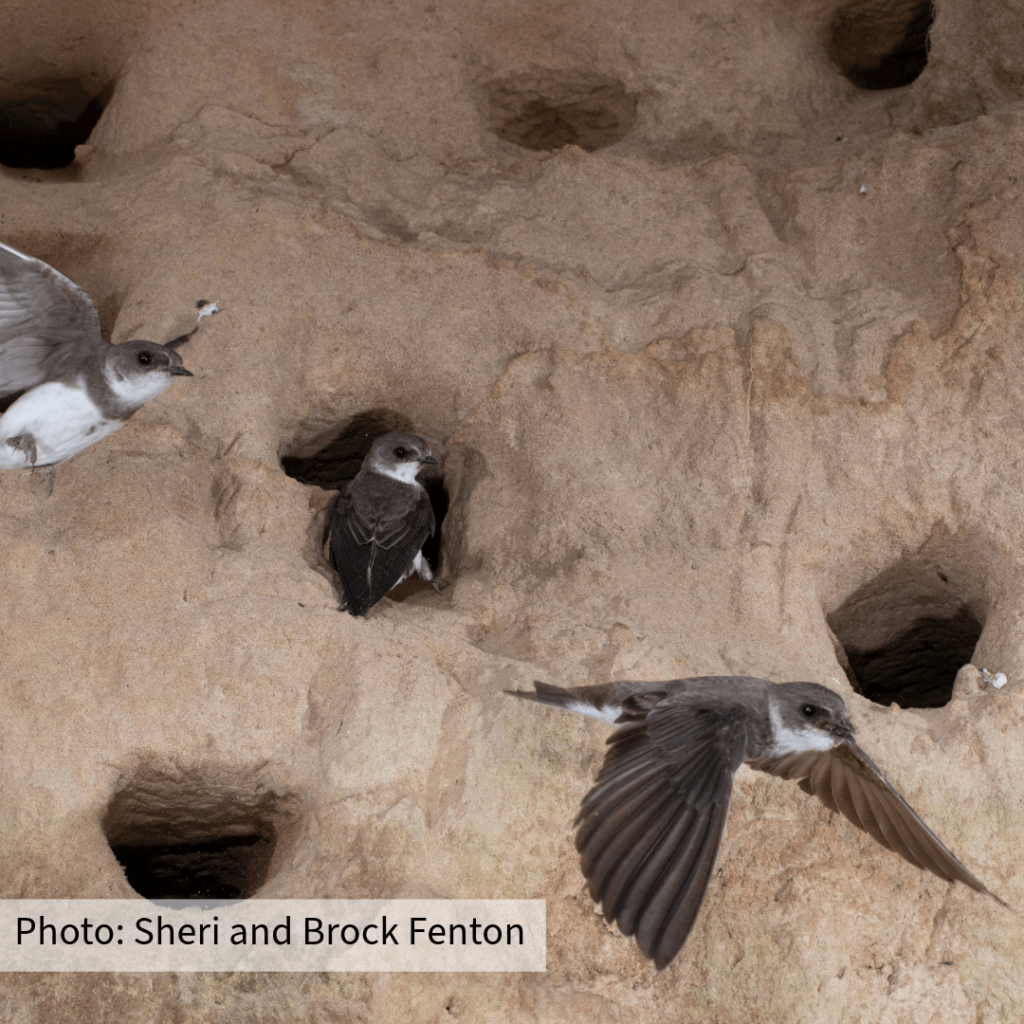
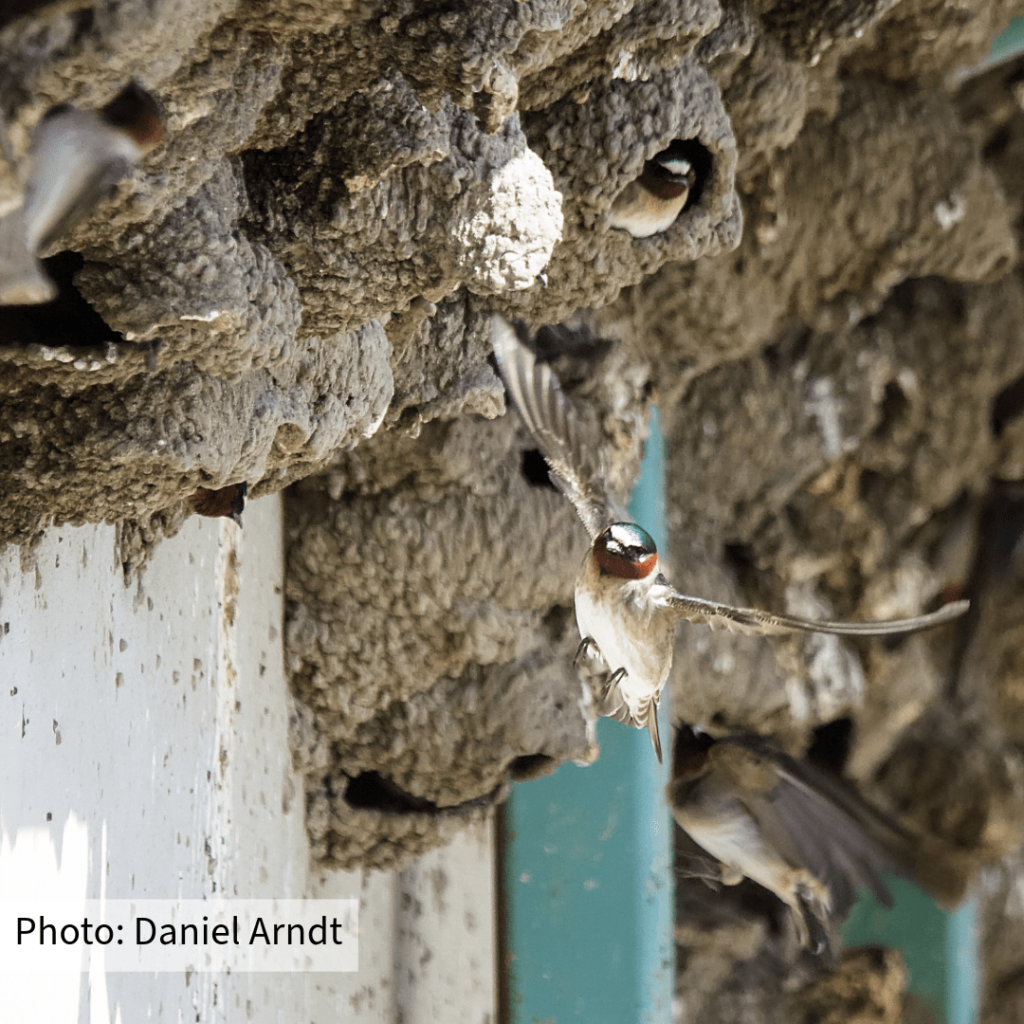
These are just a few examples of bird behaviours that you might see. As you spend more time observing birds you’ll gradually start to notice more behaviours and habitat preferences.
Birds display a very diverse set of behaviours and part of the fun is simply tuning in and noticing them for the very first time!

